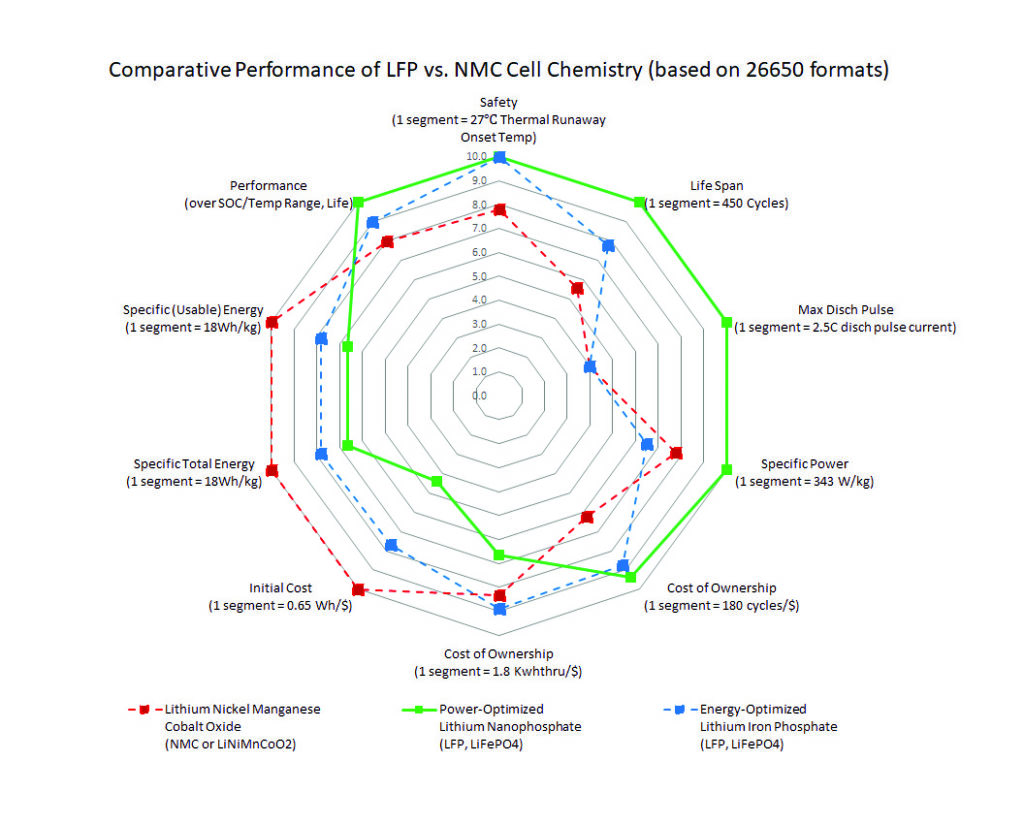CHEMISTRY
Lithium Werks Power Cells
Superior Lithium Ion Phosphate Chemistry including Nanophopsphate® for power & LiFePO4 for energy.
Academic foundation. Lithium Werks power cells are based on technology originally developed at M.I.T. for superior power performance called Nanophosphate®.
Superior capacity. The Nanophosphate technology is structurally different than other iron phosphates, allowing much higher rate capability and resulting in higher power, increased safety, and better life.
Key Benefits
Lithium Iron Phosphate
Lithium Iron Phosphate (LiFePO4) offers considerably greater energy density when compared to Lead Acid and Nickel Cadmium.
LFP is considered safer when compared to lithium metal oxide cells. Puncturing metal oxide cells usually ends in thermal runaway.
Lithium Iron Phosphate (LiFePO4) also offers longer cycle life to 2800 cycles at 100% depth of discharge.
Lithium Werks materials
Lithium Werks Cathode Materials are prepared using a unique and versatile preparative method called Carbothermal Reduction (CTR), a process to develop lithium iron phosphate cathode powder in a very efficient, cost effective, stable and scalable way.
CTR makes Lithium Werks lithium iron phosphate powder high quality, longer-lasting, with more sustained conductivity, enhanced performance and ultimately a better cathode material that is more easily manufactured into cells.
Lithium Werks holds an ISO 9000 certification, which is only given to companies with the highest quality management practices. We have a long successful history making Li-Ion batteries which includes 300+ patents relating to our technology.

Lithium Werks LFP vs. Nickel Manganese Cobalt (NMC):
If considering different Lithium chemistries, why choose LFP over NMC?
- Cobalt:
NMC cell manufacturers are consistently trying to reduce the levels of cobalt in their batteries due to insufficient supply and rising costs. Lithium Werks LFP batteries are 100% cobalt-free. - Cycle Life:
LFP batteries can typically deliver a longer cycle life over NMC counterparts. - Thermal Runaway:
NMC cells can be prone to thermal runaway at lower temperatures, especially when fully charged, when compared with LFP, which is more stable throughout the temperature range. - Abuse Tolerance:
Lithium Iron Phosphate batteries are robust and reliable. They have a higher abuse tolerance than an NMC solution. - Higher Current and Peak Power:
Lower internal resistance means a higher current and peak power capability without compromising safety.
Lithium Werks LFP vs. Lead-acid:
Choosing Lithium Werks’ patented Lithium Iron Phosphate chemistry over a lead-acid solution brings many advantages:
- Energy Density in Less Weight:
A Lithium Werks battery typically stores 3 times the energy density of a lead-acid solution, in less than half the total weight. - Constant Power:
Low internal resistance means fast charging and no loss of power during the complete discharge cycle. - Cost-savings:
While the initial purchase costs of Lithium batteries may be higher, due to the significantly longer lifespan and lack of maintenance required, the overall cost-per-cycle of a Lithium Werks solution is dramatically lower. - Usable Energy:
Lithium-ion possesses more usable energy over any state of charge. Lithium batteries 100% of rated capacity is available, regardless of discharge rate. - Longer Life:
Lead-acid batteries will only deliver a few hundred cycles before they need replacing. Lithium solutions provide thousands of cycles.
